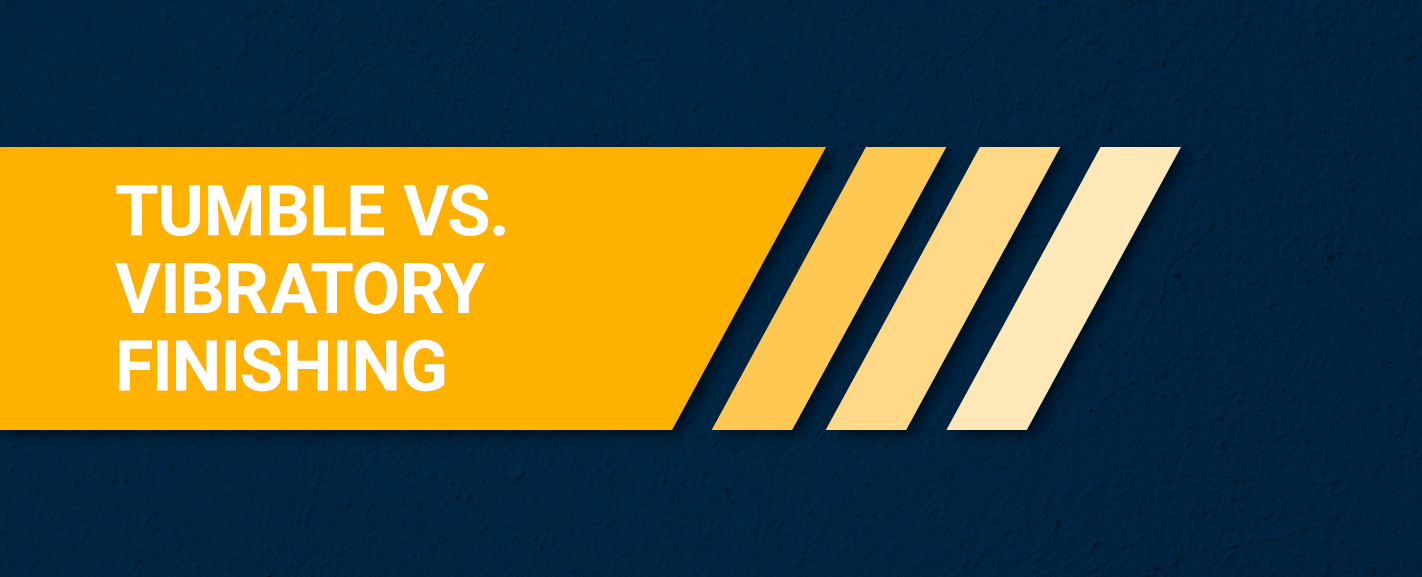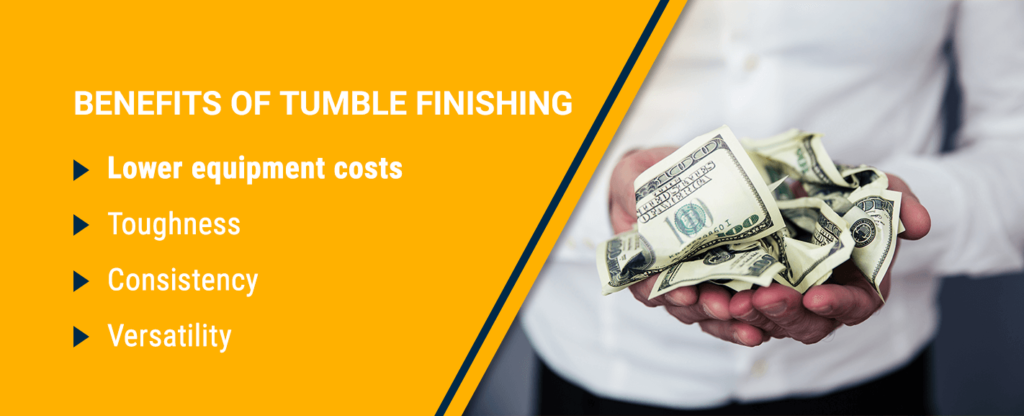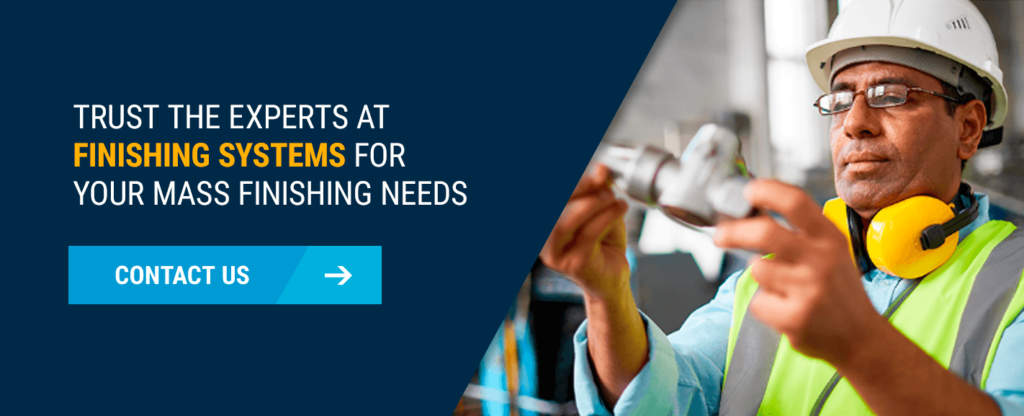
Tumble vs. Vibratory Finishing: Are You Using the Right One?
Updated: December 22, 2023In the metal finishing industry, the term “mass finishing” refers to the ability to cost-effectively finish large quantities of parts at one time. Mass finishing is frequently used for deburring, burnishing and rust and scale removal, as well as brightening and polishing parts and component surfaces.
The most common types of mass finishing are tumble finishing — also referred to as barrel finishing — and vibratory finishing.
What Is Tumble Finishing?
The tumble or barrel finishing process provides an action comparable to rocks tumbling down a steep hill. The parts are placed in a barrel along with water, abrasive media and the proper compounding agent. The rotation of the barrel causes the media mass and parts to tumble down upon itself causing friction and thereby abrading the parts in the mass. This produces a cutting action that results in a fast, efficient deburring of the part’s surfaces.
While deburring barrels are normally batch-type processing machines, single-pass processing and in-line batch processing equipment are also available.
Benefits of Tumble Finishing
Barrel tumbling is ideal for parts manufacturers that need consistent results without the setup times associated with automated machinery. Several benefits of tumble finishing include:
- Lower equipment costs: With straightforward designs and simple operation, barrel tumbling equipment typically costs much less than more complex types of finishing machinery.
- Toughness: Barrel tumbling techniques are significantly more aggressive than other sensitive finishing methods, making them ideal for demanding jobs and components requiring extra work.
- Consistency: While tumble finishing is less consistent than processes like vibratory finishing, the tumbling method offers more consistent and dependable results compared to the approach of finishing a component by hand.
- Versatility: Although barrel tumbling machines are simple in design, operators can calibrate them to perform various tasks, from deburring to finishing to removing oil and rust.
What Is Vibratory Finishing?
A vibratory finishing process consists of placing parts, media and compounds into a vibratory tub or bowl. The vibratory action creates a force on the parts causing media and parts to turn and grind against each other deburring or polishing a mass of parts.
Vibratory finishing technqiues can be used for deburring and other mass finishing applications such as polishing, cleaning, descaling and surface preparation. Vibratory equipment configurations are commonly batch tubs, round bowls, or thru-feed machines resulting in a deburring or burnishing process that is unattainable by hand.
Benefits of Vibratory Finishing
Vibratory finishing is a versatile process that can meet many needs. Depending on the materials and desired finish, manufacturers can choose a wet or dry vibratory finishing process. Wet finishing is the more popular method because of the cleaner and polished surfaces it produces. The water used in this process is also recyclable, making it a much more environmentally friendly option.
Other advantages of vibratory finishing include:
- Cost-effectiveness: Through automation, vibratory finishing equipment offers more speed than other types of finishing machinery. These machines can also handle increased quantities of parts, maximizing manufacturing efficiencies and saving on labor costs.
- Lower maintenance requirements: Vibratory finishing equipment requires less maintenance, meaning you can perform more work without needing to stop for cleaning or repairs.
- Flexibility: Vibratory machines can handle a more comprehensive range of material types than other machinery, including ceramics, plastics, steel, aluminum and copper. Vibratory equipment is also easier to customize for a specific application than many other finishing devices.
- Sensitivity: Although vibratory methods involve high levels of friction to deburr and clean parts, the equipment’s design protects sensitive materials that might otherwise break or lose shape. Vibratory finishes deliver optimal surface finishing without compromising the integrity of a component.
Comparing and Contrasting the Two Mass Finishing Types
In general, vibratory finishing is the more popular option than barrel finishing for most mass finishing applications. This is mainly because the rotary finishing process is more compatible with automation, which can save time and reduce labor costs. It’s also typically the better option for finishing very large or delicate parts and is better suited for tight-tolerance projects.
Additionally, the vibratory finishing process tends to produce a smoother finish without causing excess surface wear, which increases the durability and extends the lifespan of the part.
On the other hand, vibratory finishing equipment and systems are more complex than barrel finishing systems, which also makes them more expensive to purchase, own and operate. Barrel systems, however, take longer to complete the finishing tasks, although they do create significantly less wear on the abrasive media, which is another cost-saving advantage.
One disadvantage of the barrel tumbling system is that the parts tumble onto one another instead of gently rubbing together thereby increasing the risk of surface indentations.
Trust the Experts at Finishing Systems for Your Mass Finishing Needs
Finishing Systems is a full-service mass finishing shop specializing in vibratory finishing. We also offer state-of-the-art vibratory finishing equipment for sale for use in your finishing processes. You can trust our expertise to help you choose the best tumbling or vibratory finishing system for your application. Contact us to learn more about our extensive range of finishing equipment or our in-house services available.


